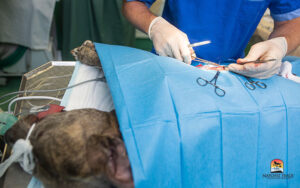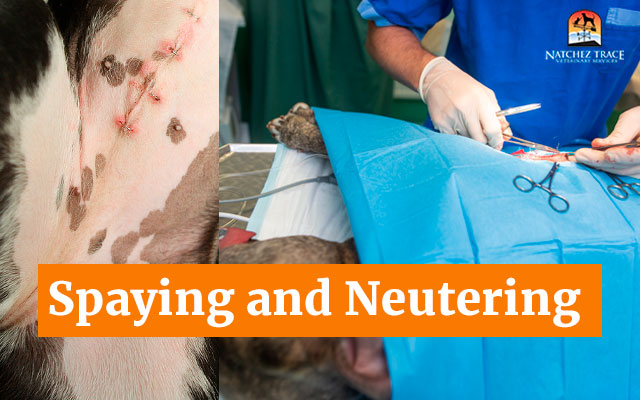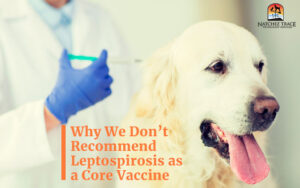Spaying and neutering are more t han just procedures to prevent unwanted litters;
han just procedures to prevent unwanted litters;
they play a crucial role in your dog’s long-term health, behavior, and overall well-being. These procedures can help reduce the risk of certain cancers, minimize behavioral issues, and contribute to a longer, healthier life for your pet.
At Natchez Trace Veterinary Services, we provide both traditional spay and neuter procedures, as well as alternative options like the ovary-sparing spay, allowing you to make the best choice for your dog’s individual needs.
To help you make an informed decision, we invite you to watch the following videos featuring Dr. Marc Smith, where he explains the benefits and considerations of each option.
In the past, traditional spaying and neutering were primarily focused on controlling the pet population. While that remains a crucial reason, modern veterinary science has expanded the available options for spaying a female dog, allowing pet owners to consider factors like hormone balance, growth, and behavioral impacts.
When deciding whether to spay or neuter your dog, it’s important to look beyond the basics. For females, spaying options for dogs range from the standard spay to the ovary-sparing spay, each offering different benefits depending on your dog’s health and lifestyle. Similarly, male dogs can undergo full castration or a vasectomy, both of which carry distinct effects on hormone levels and behavior. Understanding these spay and neuter options ensures you make an informed choice that supports your dog’s overall quality of life.
Traditional Spay for Female Dogs
The traditional spay procedure, also known as an ovariohysterectomy, involves the removal of the ovaries, uterus, and uterine horns. This makes your dog reproductively incapable and is effective in preventing unwanted litters. However, it also results in significant hormonal changes.
 Impact on Reproductive Capability: Your dog will no longer go into heat or produce hormones like estrogen, which affects various bodily functions. While these procedures are effective at preventing pregnancies, they also bring significant hormonal changes, particularly in spayed females.
Impact on Reproductive Capability: Your dog will no longer go into heat or produce hormones like estrogen, which affects various bodily functions. While these procedures are effective at preventing pregnancies, they also bring significant hormonal changes, particularly in spayed females.- Weight Gain: Due to the loss of estrogen, spayed female dogs may experience slower metabolism and increased appetite, leading to weight gain. Proper diet and exercise are important to keep this in check. Monitoring your dog’s caloric intake and ensuring they stay active can help minimize this potential issue.
- Health Concerns: The lack of estrogen can lead to issues such as weaker bones, joint problems, and an increased risk of conditions like diabetes. It’s important to be aware of these potential risks and work with your veterinarian to ensure your dog remains healthy and active post-spay.In summary, while spaying and neutering offer vital benefits like population control and reducing certain health risks, there are other factors to consider, including weight gain and health changes related to hormone loss, particularly in female dogs.
Options for Spaying a Female Dog
 While traditional spaying is common, other options exist, such as the ovary-sparing spay. This procedure removes the uterus but leaves the ovaries intact, preserving hormone production.
While traditional spaying is common, other options exist, such as the ovary-sparing spay. This procedure removes the uterus but leaves the ovaries intact, preserving hormone production.
- Ovary-Sparing Spay: Keeps estrogen levels intact, helping maintain healthy bones and muscles. However, your dog will still go through heat cycles, even though she cannot reproduce.
Consider these spay options for dogs carefully, and consult your vet to decide what’s best for your pet’s health and lifestyle.
Neutering for Male Dogs
The traditional neuter procedure, also known as an orchiectomy, involves the removal of both testicles. This renders your dog reproductively incapable and is a reliable way to prevent unwanted litters. However, it also leads to changes in hormone levels, particularly testosterone.
- Impact on Reproductive Capability:
After neutering, your dog will no longer produce sperm or testosterone, the hormone responsible for many male-specific behaviors. You may notice reduced tendencies such as marking, roaming, or aggression. While neutering effectively prevents breeding and certain behavioral issues, it also alters hormone-driven processes that influence your dog’s metabolism and muscle tone. - Weight Gain:
A drop in testosterone can slow your dog’s metabolism and increase appetite, which may result in weight gain if not managed properly. Maintaining a balanced diet and regular exercise routine will help your dog stay fit and healthy. Be sure to monitor food portions and treat intake after surgery. - Health Concerns:
Neutering reduces the risk of testicular cancer and prostate-related problems but can also slightly increase the likelihood of issues like joint problems or hypothyroidism in some dogs. Regular veterinary checkups, proper nutrition, and an active lifestyle can help prevent or manage these potential concerns.
In summary, neutering offers important benefits such as controlling overpopulation, reducing certain cancers, and improving behavior. Still, it’s essential to understand the potential changes related to hormone loss, weight, and metabolism so you can support your dog’s long-term health and well-being.
Neutering Options for Male Dogs
When neutering a male dog, pet owners have two main options to consider: full castration and vasectomy. Each approach has distinct health and behavioral impacts, so it’s essential to weigh the benefits and drawbacks carefully.
 Full castration involves the complete removal of the testicles, which eliminates testosterone production. This procedure not only sterilizes the dog but also reduces hormone-driven behaviors like aggression, territorial marking, and wandering. It can also lower the risk of testicular cancer and some prostate issues. However, with the loss of testosterone, dogs may experience changes in metabolism, leading to weight gain and a potential increase in certain health risks, such as bone and joint issues, especially in large breeds.
Full castration involves the complete removal of the testicles, which eliminates testosterone production. This procedure not only sterilizes the dog but also reduces hormone-driven behaviors like aggression, territorial marking, and wandering. It can also lower the risk of testicular cancer and some prostate issues. However, with the loss of testosterone, dogs may experience changes in metabolism, leading to weight gain and a potential increase in certain health risks, such as bone and joint issues, especially in large breeds.- Vasectomy, on the other hand, sterilizes the dog while leaving the testicles and hormone production intact. This option preserves testosterone, which helps maintain muscle mass, healthy bone development, and metabolism. However, because testosterone remains, so do behaviors like wandering and marking. Additionally, the risk of testicular cancer is not reduced, since the testicles are left in place.
Choosing between these options depends on your dog’s behavior, health, and lifestyle, so it’s important to discuss the pros and cons with your vet before making a decision.
Post-Surgery Concerns: Bladder Control Issues
After spaying or neutering, some dogs may experience mild bladder control issues due to hormonal changes. This is more common in older pets and is often temporary. Both female and male dogs can be affected as their bodies adjust to the reduced hormone levels.
- Why It Happens:
The decrease in estrogen (in females) or testosterone (in males) can influence the muscles that control urination. These hormonal shifts may temporarily weaken bladder tone, leading to minor leaks or accidents. - What to Watch For:
If your dog shows signs of incontinence after surgery, such as dribbling urine or having trouble holding it, consult your veterinarian. Most cases improve as hormone levels stabilize, but in some instances, your vet may recommend medication or supportive care to help manage the condition.

The Traditional Rationale Behind Spaying or Neutering: Population Control
 One of the primary reasons for spaying or neutering dogs is to prevent overpopulation. Every year, millions of unwanted puppies end up in shelters, and many are euthanized due to lack of space and resources.
One of the primary reasons for spaying or neutering dogs is to prevent overpopulation. Every year, millions of unwanted puppies end up in shelters, and many are euthanized due to lack of space and resources.
By spaying or neutering your dog, you’re directly helping to reduce the number of homeless animals. This decision not only benefits the individual pet owner but also contributes to a larger effort to control the pet population, preventing unwanted litters and reducing the strain on animal shelters.
Takeaways: What’s My Best Spay Option for Dogs
 When deciding on sterilization for your dog, it’s important to understand the health and behavioral effects of each option. Female dogs may undergo a traditional spay or an ovary-sparing spay, depending on how you wish to manage hormone balance and long-term health. Male dogs can have a full neuter or a vasectomy, with the choice guided by factors like lifestyle, behavior, and overall well-being.
When deciding on sterilization for your dog, it’s important to understand the health and behavioral effects of each option. Female dogs may undergo a traditional spay or an ovary-sparing spay, depending on how you wish to manage hormone balance and long-term health. Male dogs can have a full neuter or a vasectomy, with the choice guided by factors like lifestyle, behavior, and overall well-being.
Always consult your veterinarian to make the most informed decision for your dog’s unique needs. Your pet’s health and well-being should guide your choice.
People Also Ask:
1. What are the benefits of spaying or neutering my dog?
Spaying or neutering helps prevent unwanted litters, reduces the risk of certain cancers, and can improve behavior in dogs by reducing aggression and roaming. It also plays a critical role in controlling the pet population, which helps reduce the number of homeless animals in shelters.
2. Will my dog gain weight after being spayed or neutered?
Weight gain can be a side effect of spaying or neutering, particularly in females. This happens due to hormonal changes, especially the loss of estrogen, which slows metabolism. However, you can prevent excessive weight gain by adjusting your dog’s diet and ensuring they get regular exercise.
3. Are there health risks associated with spaying or neutering my dog?
While spaying and neutering have many benefits, there are some potential risks. In females, the removal of estrogen can lead to bone density issues and urinary incontinence. Neutering males may affect muscle mass and bone development, especially in younger dogs which means your dog can’t control bladder after neutering. Discuss these risks with your vet to ensure the procedure is right for your dog’s needs.







